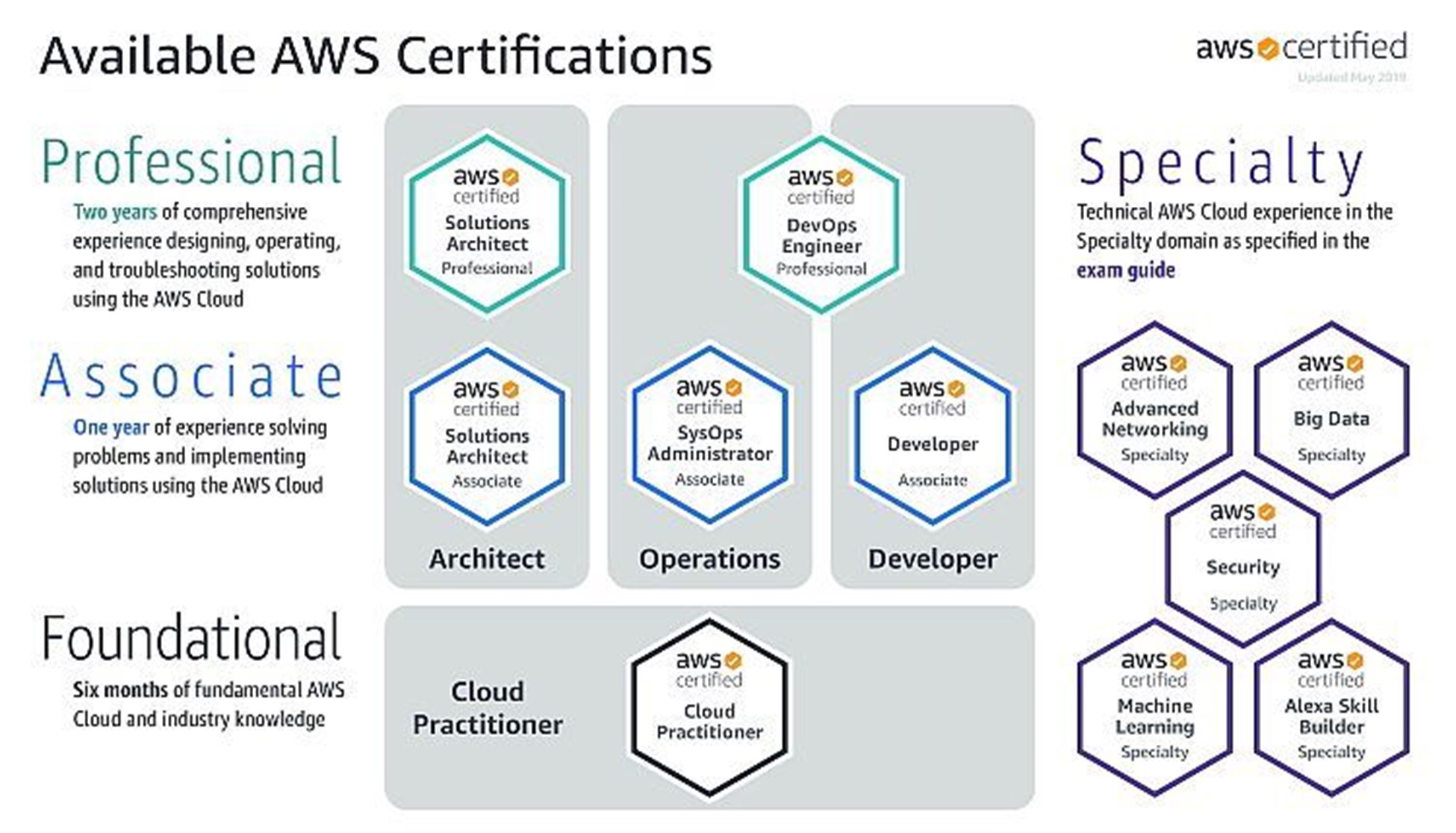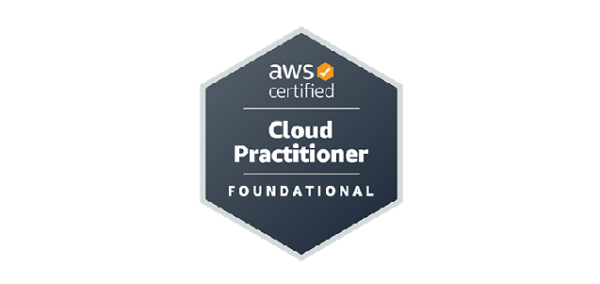AWS Certified Cloud Practitioner is a great starting point for anyone getting started with AWS. Cloud Practitioner is the fundamental course that provides an introduction and overview of the many AWS products and services. This course covers – The Basics of Cloud Computing, AWS Global Infrastructure, Storage Options, Security, Monitoring and Analytics, Migration Strategies and more.

Course Content
The Cloud Practitioner course is broken down into 4 domains: Cloud Concepts, Security and Compliance, Technology, and Billing and Pricing.
Cloud Concepts
This section covers the basics of cloud computing. You’ll learn about the different cloud architecture design principles and the key benefits of AWS cloud computing.
1.1 Define the AWS Cloud and its value
- Describe the benefits of AWS cloud computing
- Security
- Reliability
- High Availability
- Elasticity
- Agility
- Pay-as-you-go pricing
- Scalability
- Global Reach
- Economy of scale
1.2 Identify aspects of AWS Cloud economics
- Total Cost of Ownership Proposal
- Identify costs that could be reduced by moving to the cloud
1.3 Cloud architecture design principles
- Design for failure
- Compare decoupled components and monolithic architecture
- Cloud versus on-premises
Security and Compliance
This section covers security in AWS. Users are responsible for their data or anything they put into the cloud. AWS is responsible for the underlying infrastructure and physical security. AWS offers many options and additional services for enabling greater security.
2.1 Define the AWS shared responsibility model
- The customer’s responsibility on AWS
- AWS responsibilities
2.2 Define AWS Cloud security and compliance concepts
- Enabling encryption on AWS for a given service
- Services for auditing and reporting
- Concept of least privileged access
2.3 Identify AWS access management capabilities
- The purpose of User and Identity Management
- AWS Identity and Access Management (IAM)
- Groups/Users
- Roles
- Policies

2.4 Identify resources for security support
- Different network security capabilities
- AWS documentation (best practices, whitepapers, official documents)
- AWS Trusted Advisor security checks
Technology
This section focuses on the AWS platform and core services. You’ll need to understand the AWS global infrastructure and the various services for dividing IT infrastructure and the deploying applications.
3.1 Define methods of deploying and operating in the AWS Cloud
- Different ways of dividing and operating in the AWS cloud (CLI, SDKs, APIs, AWS management console)
- Different types of cloud deployment models
- Cloud native
- Hybrid
- On-premises
3.2 Define the AWS global infrastructure
Regions, Availability Zones, and Edge Locations

3.3 Identify the core AWS services
- Categories of AWS services (compute, storage, network, database)

- AWS documentation
- Various levels and scope of AWS support
- On-demand pricing
- Reserved pricing
- AWS Organizations consolidated billing
- Ways to get billing support/information
- Cost Explorer
- Alarms/alerts




